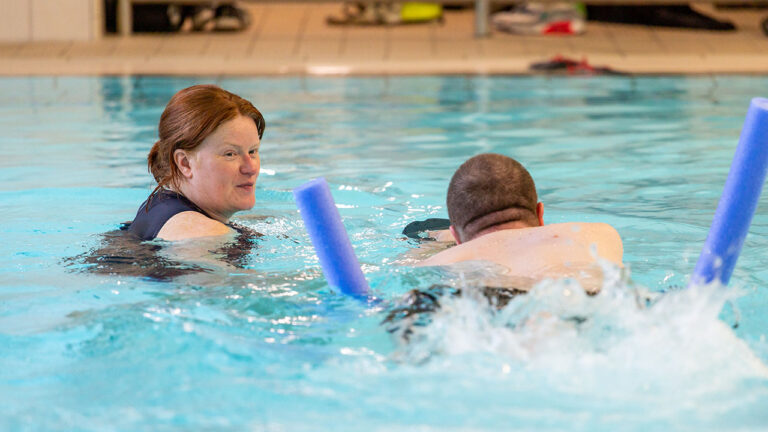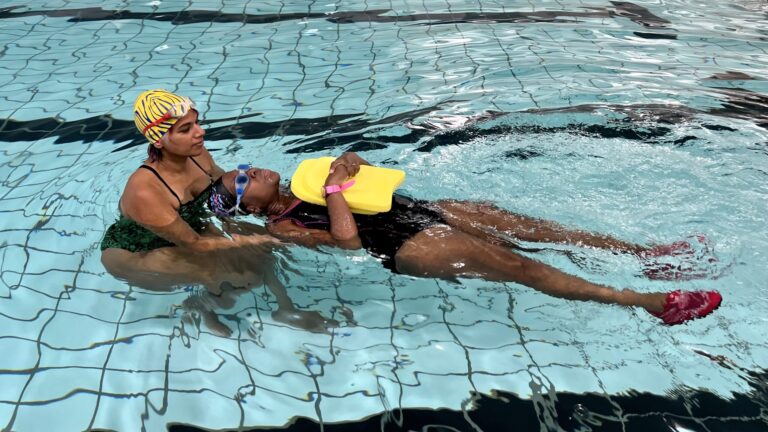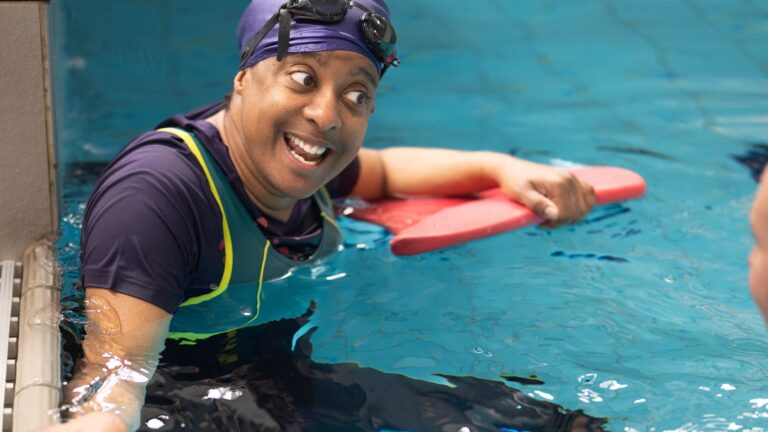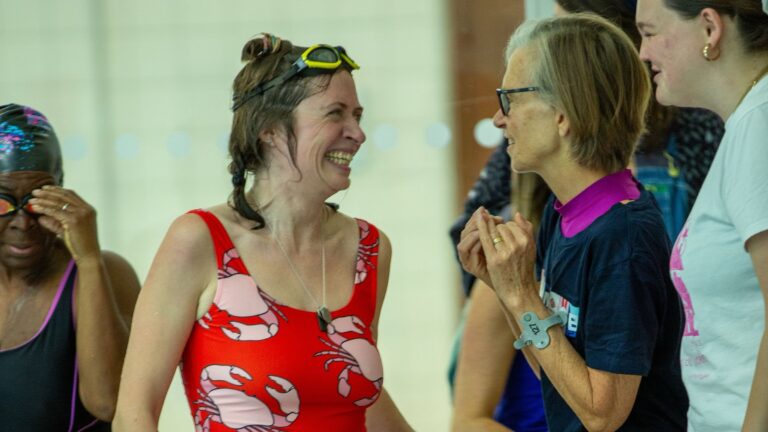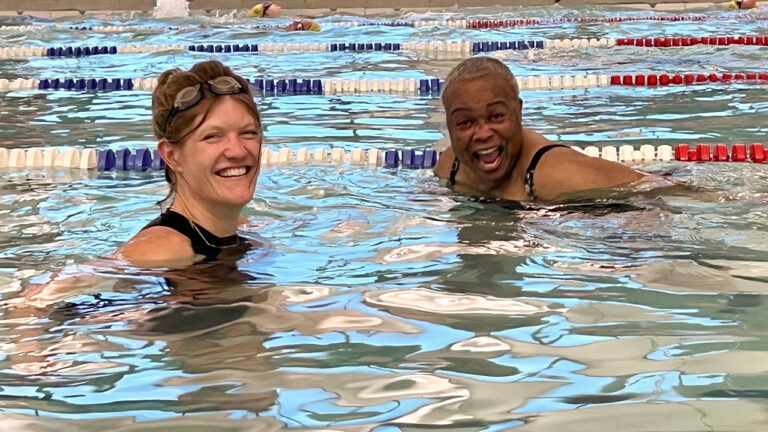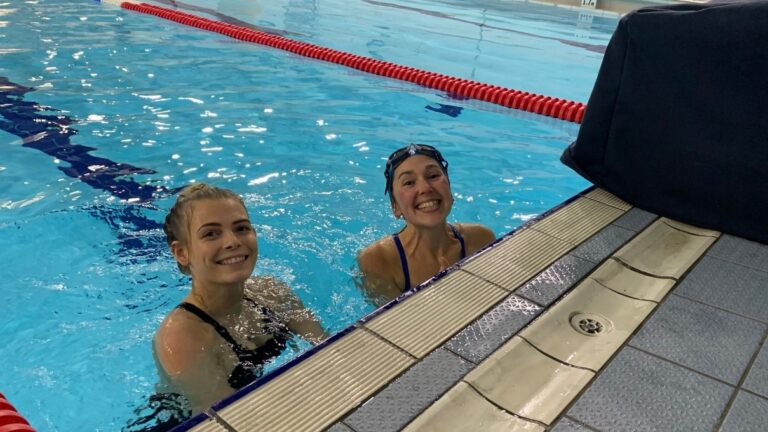In this week’s blog post, you will find out more about Andy Greene, one of our swimmers. Andy is a member of Disabled People Against Cuts (DPAC) national steering commitee, and he has agreed to provide Kendall with a fascinating interview. The International Day of Disabled people had many of us reflecting on the relationship between disability, the individual and society.
Could you tell me a bit more about the work that you’ve been doing in disability rights, more recently and over the last many years that you’ve been involved?
My main work in working for myself is promoting in disability culture and independent living. Independent living is an idea that’s come from the community itself, like the Social Model of Disability or Disability History Month. There have some fantastic changes and developments and progress over the years in terms of the relationship between disabled people and society. But everything is cyclical, and we are in the period where lots of rights that were fought over and won, and some that were fought over and not won, have been eradicated over the last decade. We stand on the shoulders of giants as activists and people who work in the disability industry. Those who have gone before have started new territory every time, and we have to make sure that work is honoured and not lost because it can be undone. My work is really trying to bring those great ideas from the past around the Social Model and Independent Living and trying to make it relevant in the 21st Century – updating and bringing those great ideas to a new generation and new audience, including disabled people who are out there today taking part in everyday life now as workers, neighbours and people who deliver our services and putting them in contact with the history and where this movement has come from.
You mentioned it’s Disability History Month and you’ve touched on how your work is very much about trying to continue the Disability Rights Movement. In that sense, is it something that’s still quite important today? You’ve mentioned disability rights being eradicated today – what are some examples of some of the challenges still faced today?
I am part of a campaign called Disabled People Against Cuts (D-PAC), which is about disabled people getting involved in direct action and civil disobedience. That has really been the tune of the day for the last 10 years. Under austerity we saw the eradication of public services. There was a change in the narrative which demonised disabled people in order to carry through those public sector cuts. Spending too much on disabled people was a message delivered time after time. And if you look at Covid, blanket do not resuscitate orders were given at GP surgeries to thousands of people at a time were ordered with what in effect became death notices for lots of those people without consultation, often without those people even being aware. We can look at the local authority’s responsibility to supply services, particularly social care, and that was written away with a stroke of a pen when Covid came in. There was a real kind of return to form in various policy changes, in spite of the government saying that some of them have ended. Some of them in theory have, but actually a lot of these things have been carried out. You look at the guidelines that were given out and then the practices that were taking place in terms of public services – open access to those services, making sure that risk assessments were kept up to date – those things didn’t happen and lots of disabled were affected. We have to get out there and push. As ever, we’ve always looked to ourselves to find the solution to these things, and it’s always going to be from our community that the energy, dynamic, accountability and demand to push comes from. As previously shown, we can really only depend on ourselves when push comes to shove.
At WeSwim we talk a lot about the Social Model of Disability. You’ve mentioned this a couple of times as well as Independent Living – could you explain what you mean by these and how they relate to the wider Disability Rights Movement and disability history generally in the UK?
The Social Model of Disability is a perspective that explores the relationship between impairment, disability, disabled people and society. It gives a context on that to address the previous perspective on that relationship – which was that disabled people were broken and needed to be segregated or fixed, or needed to be fixed in order to be taken back to society or segregated if they couldn’t be fixed. That perspective of disabled people was called the Medical Model where all the problems were rooted in the disabled person and their medical condition. Disabled people themselves started discussing these relationships and what they decided was that a truer exploration of that relationship would be to say that disabled people were not disabled by impairments but by the way that society was organised and the barriers created by the this organisation, the institutions and processes of society. It rooted the barriers externally within society instead of internally within the disabled person. It allowed us to create a map, which is the Independent Living Movement. The easiest way to understand it is that the Social Model is our critique of what the problem is and the Independent Living principles are our solution as to how you address those problems and barriers. Independent Living is about looking at the world around us in practical ways. It’s an idea and philosophy but it’s also a practical tool for examining the kinds of tools, support, equipment, access, inclusion, and processes that we need to navigate the world around us on equal terms. The Social Model is the summary of the barriers, and Independent Living is about how to apply solutions.
Thanks so much for sharing your experience and knowledge with us, Andy. How can people get involved and support your work?
The campaign group that I am part of have produced a vision document for the future of social care and Independent Living. We’ve called it the National Independent Living Support Service. We’ve consulted for over 2 years with hundreds of disabled people, organisations, academics and researchers. We’ve produced this vision document which maps out how an Independent Living support service would replace social care. It outlines what structures that would take. We’re in the process of consulting around alternative forms of social care – things like co-ops, CIC’s, entrepreneurs – all of those kinds of things. If people want to get involved who have alternative ideas about social care, we’d love to hear from them and map out what they’re doing and support exchanging learning.

